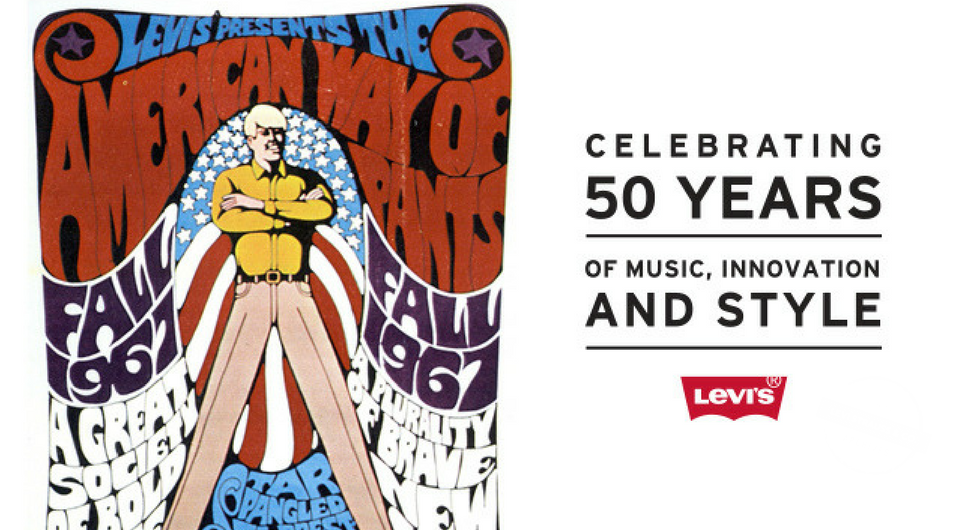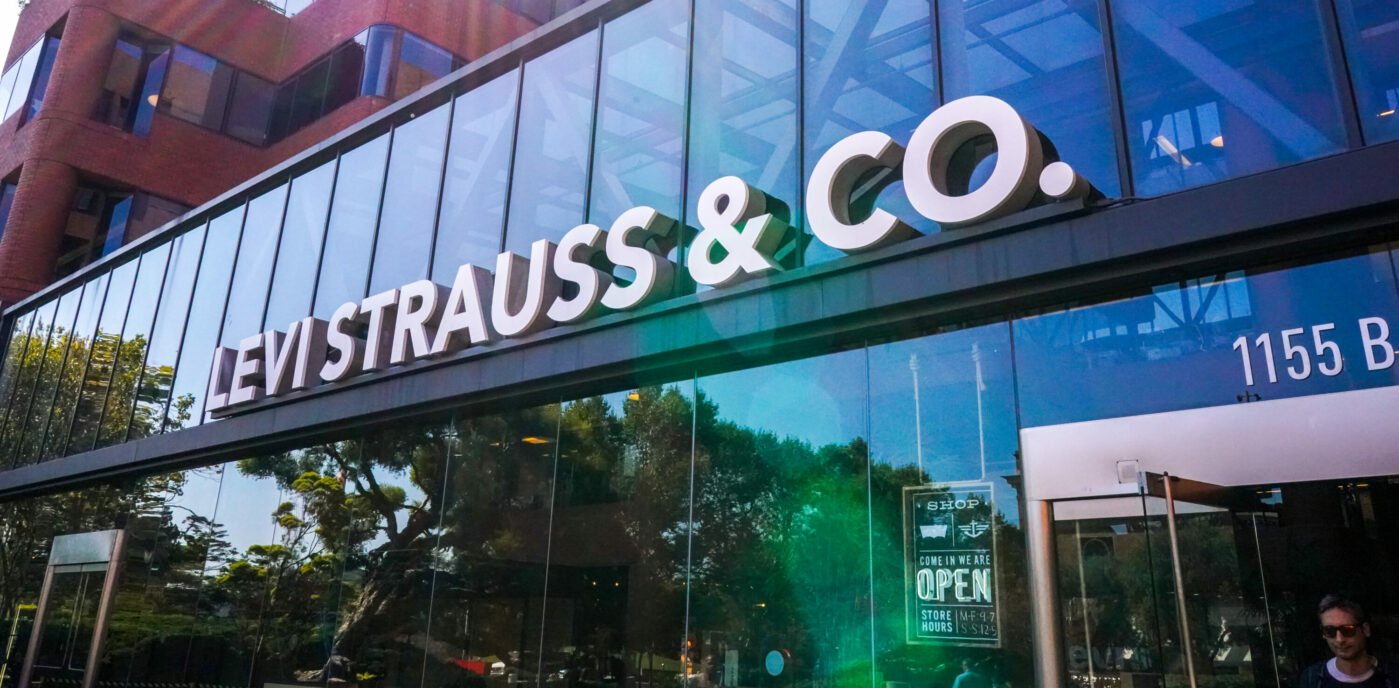1967 was a game-changer for the Levi’s® brand. So this week we’re looking back at some of our milestone moments from that year and celebrating 50 years of music, innovation and style.
“White Levi’s® come in black, blushing bravo blue, I love you…” croons Grace Slick as the psychedelic sounds of Jefferson Airplane hit San Francisco’s radio airwaves. As the Vietnam War rages abroad, blue jeans-clad students at the University of California Berkeley campus across the Bay gather at Sproul Plaza for peace protests.
Other youth hitchhike into the city’s burgeoning Haight-Ashbury district, where Rolling Stone magazine is showcasing John Lennon on its inaugural cover. Several miles away at Levi Strauss & Co., an advertisement for a pre-shrunk pair of Levi’s® — now buy your exact size — swaps the word “overalls” for “jeans,” the word teenagers everywhere are calling our riveted denim pants.
Fifty years ago, Levi Strauss & Co. was abuzz with change. The public relations department issued a memo reminding employees that the new Levi’s® housemark — later known as the Batwing — would soon launch. And marketing redirected its focus. Cowboy-themed billboards encouraging people to visit the rodeo transitioned to youth-focused advertisements and posters that were perfect to pin up on a bedroom wall.
With prizes fit for budding musicians, Levi’s® contests drew in teens with offers of guitars or jean-shaped radios. Company catalogs featured updated product pairings like our new denim jacket, reassigned lot number 70505 to coordinate with our new pre-shrunk zippered 505® jeans. In stores, illustrations of younger Levi’s® fans engaged in sports, hitting the beach or enjoying music caught the attention of high school and college students.
Shifts in society — especially related to a rising youth culture, as exemplified by San Francisco’s counterculture movement — directly influenced Levi Strauss & Co. As a progressive business rooted in the city’s liberal values, LS&Co. embraced the changes and responded with a fresh outlook.
Peggy Caserta, who owned a boutique in the Haight called Mnasadika, tells a Levi’s® story that highlights this reaction. Peggy requested new fits from our Valencia Street factory when her customers began converting their jeans into flares and bell bottoms — something customers were doing to wear their pants with boots. LS&Co. must have taken the request to heart, as it created a new line (orange Tab) with bootcut and bell bottom jeans two years later. This ability to evolve and change has been a hallmark of LS&Co.’s success over the years.
Here’s a breakdown of Levi’s® highlights from 1967:
- New housemark, the Batwing logo, is introduced.
- Preshrunk zippered jean, the 505®, is launched.
- New denim jacket, later dubbed the Trucker, is assigned lot number 70505.
- The word “jeans” is adopted for a new product ad for the 505®, replacing the word “overalls.”
- Marketing shifts from cowboys and rodeos to youth-centered imagery.
- Some of the first radio advertisements — White Levi’s® and four other tracks recorded by Jefferson Airplane — hit the airwaves.
- Branding spells the word “Levi’s®” with a lowercase “e” for the first time.







